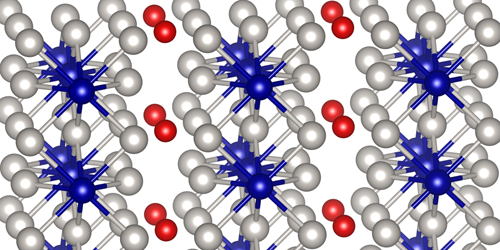A New Route to Room-Temperature Ferromagnets
Synthesizing the strong permanent ferromagnets vital to many technological applications requires the costly and environmentally harmful mining of rare-earth elements. But finding novel alternative compounds with similarly strong ferromagnetic properties is challenging. Tyler Slade of Ames National Laboratory in Iowa and his colleagues now show how adding transition metals to low-melting-temperature combinations of platinum and phosphorus yields a new crystalline material that exhibits strong ferromagnetic order at room temperature [1]. Their strategy offers a way to search for above-room-temperature ferromagnetic compounds that combine high-melting-temperature and low-boiling-temperature elements for use in solid-state memory devices, engines, and turbines.
The researchers explored a difficult-to-synthesize class of materials composed of elements that boil and melt at vastly different temperatures and pressures. Their recent work indicated that, just as salting an icy road helps melt the ice, adding a volatile main group element to a higher-melting-temperature metal yields liquid melts at laboratory-convenient temperatures.
To investigate how such combinations could produce entirely new materials, Slade and his colleagues started with a low-melting-temperature liquid of platinum (Pt) and phosphorous (P) held at a high temperature. Then they added chromium (Cr) and allowed the mixture to cool gradually. The process produced plate-like crystals of a new material, Cr1+xPt5−xP, in which quasi-2D slabs of CrPt3 are separated by sheets of P atoms. The strongly anisotropic material is ferromagnetic below the high temperature of 465 K.
While the platinum’s high cost precludes the widespread use of this particular compound, similar low-melting mixtures exist for other earth-abundant pairs of elements that can offer useful magnetic properties. The researchers hope their concept will lead to alternative magnets that don’t rely on rare-earth elements.
–Rachel Berkowitz
Rachel Berkowitz is a Corresponding Editor for Physics Magazine based in Vancouver, Canada.
References
- T. J. Slade et al., “High-temperature ferromagnetism in Cr1+xPt5−xP,” Phys. Rev. Mater. 7, 024410 (2023).




